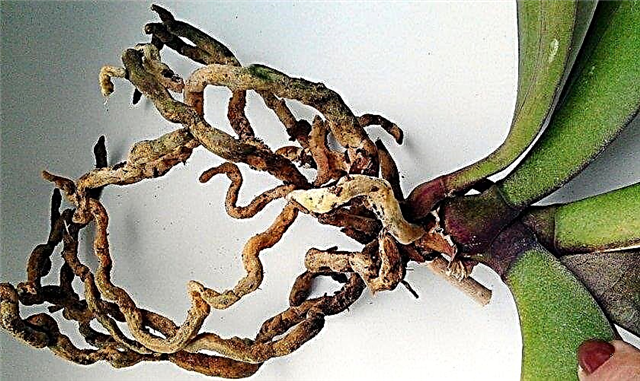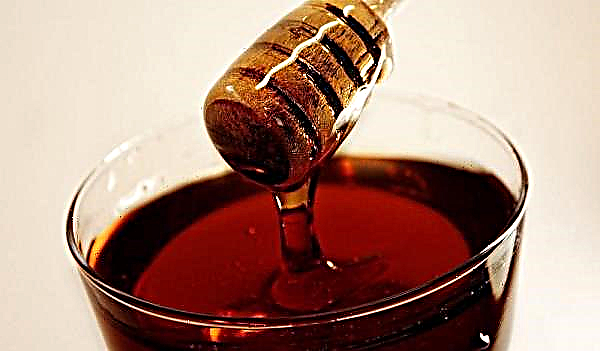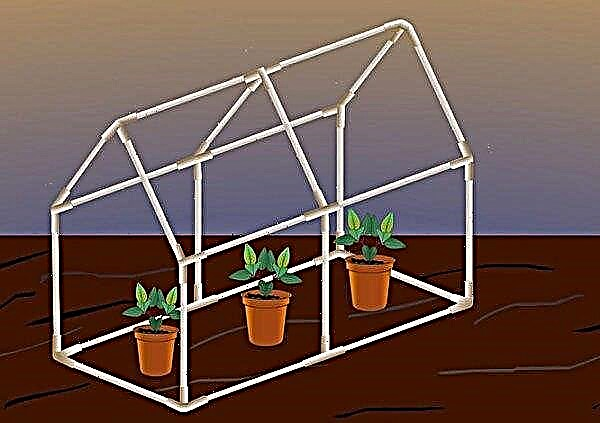Orchids are considered capricious and tender indoor plants, but they also have a high vitality. You can restore the flower even after rotting the roots, loss of leaves and peduncle. The main methods of resuscitation and preventive measures are described below.
Features of growing orchids
At home, several types of orchids are grown, and each of them has its own individual characteristics. However, for all plants it is necessary to create conditions that are as close as possible to natural ones.
Common features include:
- the use of plastic containers instead of clay;
- maintaining the temperature at the level of + 20 ° С (not lower);
- good lighting;
- sufficient moisture without stagnation of water.

How to understand that plant roots rot
Orchids have ancillary roots, which are covered with velamen - a special spongy fiber, whose task is to protect and preserve moisture. The roots also attach an orchid to a place of residence, for example, to a tree.
A healthy root system is covered with white, green or silver shades. Color change is the first sign of root damage.Did you know? There are miniature orchids a few millimeters in size and giant creepers up to 35 meters long. Some species live up to 70 years.
Other external signs of root rot will be:
- lethargy and dryness of leaves in the absence of reaction to watering;
- traces of green algae or spores on the inside of the container;
- instability of leaves in the upper part.

The affected parts, in addition to color changes, have such features:
- slimy and wet areas;
- after pressing the root water flows out;
- parts of the roots became threadlike.
Causes of plant death
The main causes of death of a flower are:
- excess irrigation with stagnation of water in the pot;
- insufficient watering;
- lack of sunlight;
- wrong choice of capacity and soil mixture;
- excess fertilizer;
- mechanical damage;
- fungal diseases;
- invasion of pests.
How to reanimate an orchid at home
Salvation of the flower is carried out with a severe defeat of the plant, when it practically died. The natural endurance of epiphytes often allows you to return to life specimens with a complete loss of roots, leaves or peduncle.
Without roots
If the plant pulled out of the container shows rotting of the roots, the following steps must be taken:
- To clean the orchid from damaged leaves and roots, with warm water to wash off the rest of the soil.
- Dry on paper or newspaper.
- Carefully inspect the roots and remove damaged parts.
- Sprinkle slices with charcoal powder, after drying, place the remaining roots in a fungicide solution.

A small window greenhouse will be the best place to restore. A steamed moist sphagnum is placed in a container with a thin layer of expanded clay, on which a leaf outlet is then placed.
The greenhouse must be closed and the following conditions provided inside:
- temperature within +22 ... + 28 ° С;
- humidity - 70–100%;
- Bright illumination for 12-14 hours a day.
If there is no suitable greenhouse, the outlet can be placed in a deep glass container. Every morning, it is necessary to pour soft filtered or boiled water there. The surface of the water should reach only the bottom of the orchid, without touching the leaves. After 6 hours, the water is drained, and the orchid is dried until the next morning. The container should be in a shaded area.Important! The amount of residual roots significantly affects the speed of recovery. Losses within 60% allow you to revive the orchid in about a month, and a complete loss of roots will require about a year of recovery.
The orchid is transplanted into a container with a substrate when the roots grow to 3-4 cm.

Without leaves
When the leaves dry and fall off, the roots are inspected and when rot is detected, they are acted as described above. If everything is in order with the roots, most likely the plant was overheated for a long period and therefore lost its leaves.
To restore the flower, the following steps should be performed:Did you know? Orchid flowers emit a wide range of smells: from the most delicate vanilla to rotten meat, but all of them are hypoallergenic.
- Rearrange the container in the shade and allow to cool, without watering or spraying for 3-4 hours.
- Spray the leaves of the cooled plant with clean water.
Video: resuscitation of an orchid without leaves and growth points
Leaves can die from freezing. In this case, you must wait until they fall away themselves. Then check and treat the roots, as in the previous case, and transplant the flower into a new soil. At the same time, the plant is not watered or fed for 2-3 days.
Important! Short-term cooling with minor leaf damage does not require intervention. Flower may lose 1–2 sheets, and then recover yourself.
Without peduncle
Drying of the flower stalk after flowering is natural. If its dying occurred at another time, the plant needs help. The flower stalk is cut off at a height of 5-10 mm, leaving a small stump. Then you need to remove the flower, check, peel and process the roots, dry. The orchid is transplanted into a new substrate from a mixture of pine bark and moss and placed in a bright place, without the sun falling on the leaves. Watering is performed after drying of the substrate.

Resuscitation Care
After resuscitation, it is necessary to carefully ensure that the rays of the sun do not fall on the orchid, and that water does not accumulate in the container. The transplanted flowers may be unstable, therefore they are additionally fixed to the support.
Preventative measures
To prevent the death of parts of the plant, it is necessary to ensure the necessary balance of temperature and humidity, as well as:
- plant an orchid in a high-quality substrate from pine bark, which will provide air and moisture permeability of the roots;
- change soil 2 times a year;
- check the plant for pests;
- control the concentration of fertilizers used.
When resuscitation doesn't make sense
There is a chance to reanimate an orchid in most cases. The most severe are diseases and growth point damage. If only a leaf is left from the plant, then due to the lack of a growth point, flower restoration is impossible.
Useful Tips
To speed up plant recovery, various additives can be used.
To moisten the substrate or watering use:
- sweet water (1 tsp. honey or sugar syrup per 1 liter of water);
- Feeding with iron preparations;
- complex fertilizers in a minimum concentration;
- treatment with growth stimulants (for example, “Zircon” or “Epin”), which are diluted in a concentration of 1 drop per 1 liter of water, and then an orchid is bathed in this solution from 20 minutes to 2 hours (depending on the condition of the flower).
Video: how to reanimate an orchid
Orchids of all kinds are distinguished by endurance and vitality. Even if parts of the plant are lost, the grower should take the necessary resuscitation measures and try to save the flower.














